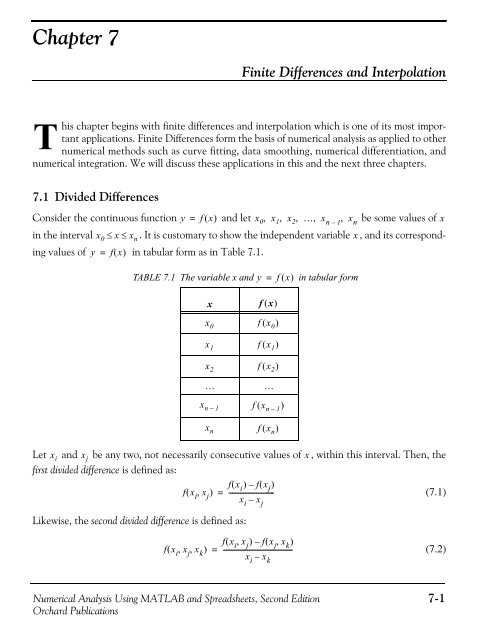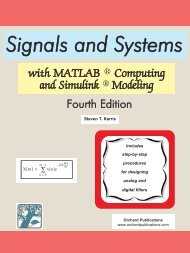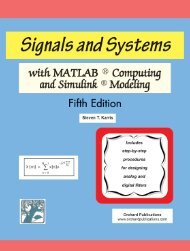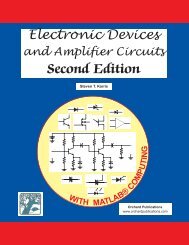Numerical Analysis
Numerical Analysis - Orchard Publications
Numerical Analysis - Orchard Publications
- No tags were found...
Create successful ePaper yourself
Turn your PDF publications into a flip-book with our unique Google optimized e-Paper software.
Chapter 7Finite Differences and InterpolationThis chapter begins with finite differences and interpolation which is one of its most importantapplications. Finite Differences form the basis of numerical analysis as applied to othernumerical methods such as curve fitting, data smoothing, numerical differentiation, andnumerical integration. We will discuss these applications in this and the next three chapters.7.1 Divided DifferencesConsider the continuous function y = f( x)and let x 0 , x 1 , x 2 , …, x n – 1, x nbe some values of xin the interval x 0 ≤x≤ x n . It is customary to show the independent variable x , and its correspondingvalues of y = f( x)in tabular form as in Table 7.1.TABLE 7.1 The variable x and y=f( x)in tabular formxf ( x)x 0 f ( x 0 )x 1 f ( x 1 )x 2 f ( x 2 )……x n 1– f( x n – 1 )x nf( x n )Let x i and x j be any two, not necessarily consecutive values of x , within this interval. Then, thefirst divided difference is defined as:fx (f( x i , x j ) i )–fx ( j )= ---------------------------(7.1)–Likewise, the second divided difference is defined as:x ix jf( x i , x j , x k )fx ( i , x j ) – fx ( j , x k )= ------------------------------------------x i – x k(7.2)<strong>Numerical</strong> <strong>Analysis</strong> Using MATLAB and Spreadsheets, Second Edition 7-1Orchard Publications







